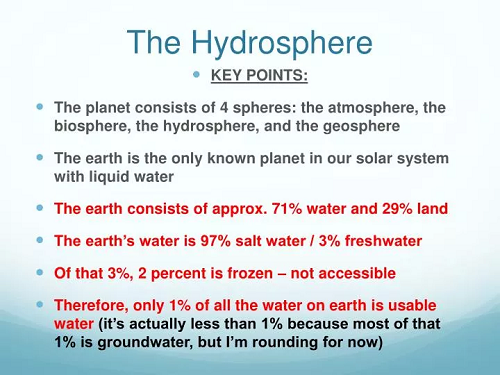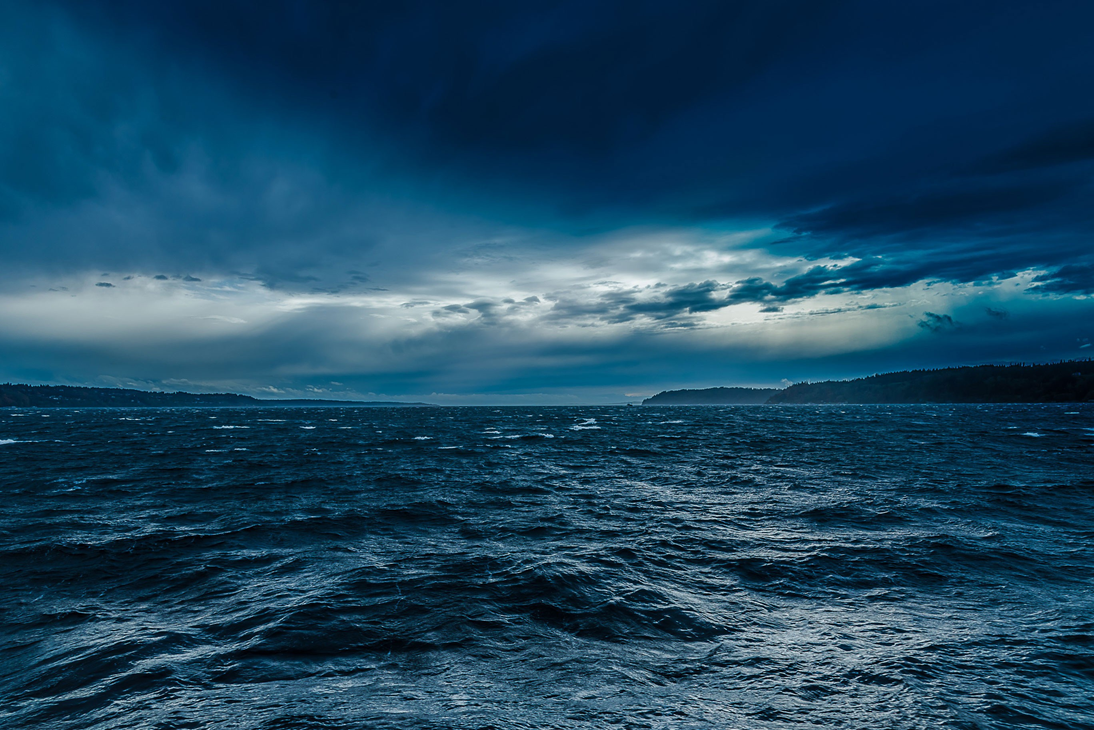Unit 1: Hydrosphere
Unit 1: Hydrosphere

Unit 1: Hydrosphere

Unit 1: The Hydrosphere
This unit describes the waters of the Earth and the science of oceanography. Students will learn the importance of the oceans and how oceans are utilized as a resource.
A hydrosphere is the total amount of water on a planet. The hydrosphere includes water on the planet's surface, underground, and in the air. A planet's hydrosphere can be liquid, vapor, or ice.
On Earth, liquid water exists on the surface in oceans, lakes, and rivers. It also exists below ground—as groundwater, in wells and aquifers. Water vapor is most visible as clouds and fog.
The frozen part of Earth's hydrosphere is made of ice: glaciers, ice caps, and icebergs. The freezing part of the hydrosphere has its name, the cryosphere.
Water moves through the hydrosphere in a cycle. Water collects in clouds, then falls to Earth as rain or snow. This water collects in rivers, lakes, and oceans. Then, it evaporates into the atmosphere to start the cycle again. This is called the water cycle.
Student Goals
- Define oceanography.
- State the four branches of oceanography and describe each branch.
- State the importance of the world's oceans.
- Give examples of how humans use the ocean as a resource.
Vocabulary
Lesson Reading

